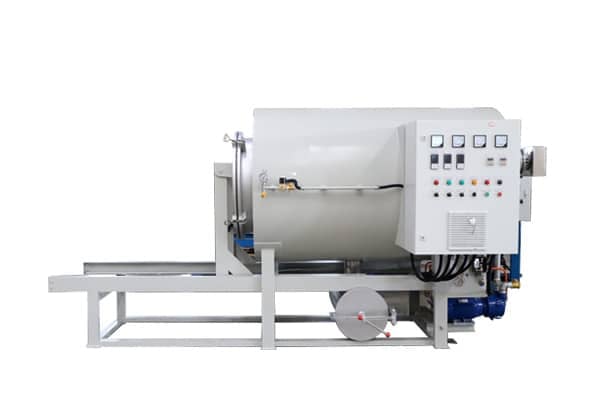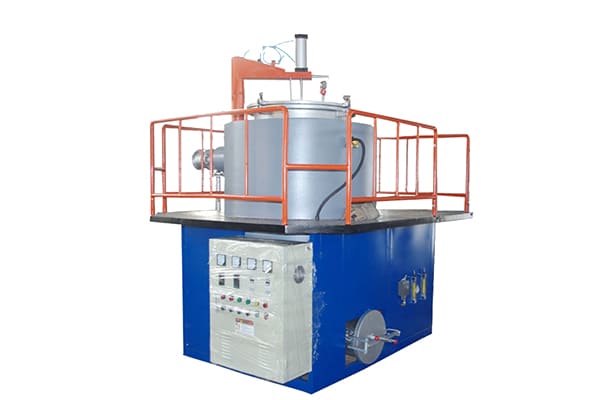In the production and processing of polymer materials like plastics, chemical fibers, and rubber, there’s a persistent headache: How can we efficiently, environmentally, and thoroughly clean polymer residues from components like molds, spinnerets, and filter screens?These residues, such as carbonized plastic or cross-linked rubber, are often very stubborn. Traditional methods like open firing or solvent soaking are not very effective. They can also damage the workpieces, create environmental pollution, and pose safety risks.Now, we introduce the Vacuum Cleaning Furnace https://8ruiyan.com/en/all-vacuum-cleaning-furnaces/. With its unique working principle and excellent performance, it has become an essential cleaning guardian in the modern polymer processing industry.
1. The Magic Principle: “Decomposition” in an Oxygen-Free Environment
The core principle of the vacuum cleaning furnace can be summarized in four words: “Vacuum Pyrolysis.”
Imagine breaking down stubborn polymers using high temperatures in a completely oxygen-free environment. This is exactly what a vacuum cleaning furnace does.
- Heating: First, the heating system activates. It raises the temperature inside the furnace chamber uniformly to a preset high level (typically between 400°C – 600°C).
- Vacuum Pumping: Then, the furnace is sealed and the vacuum pump starts. It removes almost all the air (especially oxygen) from the chamber. This step is crucial. It creates an oxygen-free or oxygen-deficient environment.
- Pyrolysis: Under the combined effect of high temperature and no oxygen, the polymers (like Nylon, PET, Polypropylene) on the workpieces do not burn as they would in air. Instead, they undergo thermal cracking. The long chains of the polymer molecules break apart. They decompose into small, volatile gas molecules, like methane and ethylene.
- Exhaust Removal: These pyrolysis gases are continuously extracted by the vacuum pump. They are directed into a follow-up exhaust gas treatment system (e.g., an incinerator, scrubber). There, they are rendered harmless, eventually converted into water and CO₂, ensuring eco-friendly discharge.
After this process, the stubborn polymer residue that was stuck on the workpiece magically “disappears.” Only a tiny amount of inorganic ash remains. This ash can be easily removed with compressed air or wiping, leaving the workpiece surface clean and smooth.
2. Core Components of the Vacuum Cleaning Furnace
A standard vacuum cleaning furnace typically consists of these key parts:
- Furnace Body: The core container. It usually has a double-layer water-cooled structure. The inner liner is made of high-temperature resistant stainless steel, ensuring sealing and insulation.
- Heating System: Electric heating elements arranged around the furnace chamber. They provide a uniform and controllable heat source.
- Vacuum System: Mainly includes the vacuum pump, valves, and piping. It creates and maintains the high vacuum environment inside the furnace.
- Temperature Control System: The brain. It includes thermocouples, an intelligent temperature controller, and a PLC. It enables precise temperature control and process curve setting.
3. Different Types for Different Needs
Based on structure and application, vacuum cleaning furnaces mainly come in these types:
- Horizontal Vacuum Cleaning Furnace:
- Features: The door is on the side. Workpieces are loaded into the chamber using a cart or rails.
- Zalety. Easy loading/unloading. Especially suitable for longer, larger parts like big molds or screws.
- Applications: Cleaning screws for plastic extruders, large injection molds.

- Vertical Vacuum Cleaning Furnace:
- Features: The door is on the top. Workpieces are usually lowered in by hanging.
- Zalety. Saves floor space. Offers better temperature uniformity inside the furnace.
- Applications: Cleaning small precision parts in the chemical fiber industry, like spinnerets, filter cores, and metering pumps.

4. Why Choose the Vacuum Cleaning Furnace? Its Outstanding Advantages
Compared to traditional cleaning methods, the advantages of a vacuum cleaning furnace are overwhelming:
- Thorough Cleaning: Can completely remove polymer residue from complex pores and deep holes.
- Non-Damaging: The oxygen-free environment prevents oxidation and burning of workpiece surfaces. This extends the service life of molds and precision parts.
- Safe & Eco-Friendly: The whole process is enclosed. No open flames, no dust. Harmful gases are treated before discharge. It is safe for operators and the environment.
- Energy Efficient & Highly Effective: High thermal efficiency. High automation, capable of unmanned operation. Significantly reduces labor costs and energy consumption.
- Improves Work Environment: Say goodbye to smoky, fiery methods and pungent chemical solvents. Makes the workshop clean and tidy.
5. Conclusion
The vacuum cleaning furnace is more than just a piece of equipment. It represents an efficient, clean, and sustainable industrial production philosophy. In today’s world, with its increasing focus on environmental protection and efficiency, it has become the necessary choice for industries like chemical fibers, plastics, rubber, and filtration to improve product quality and reduce overall costs.
If you are still struggling with how to clean those polymer residues, then the vacuum cleaning furnace is undoubtedly your best solution.
For further consultation, please contact our technical team for expert advice.
Whatsapp:86-19106101570
wechat:86-19106101570
email:fob@jsryan.com
